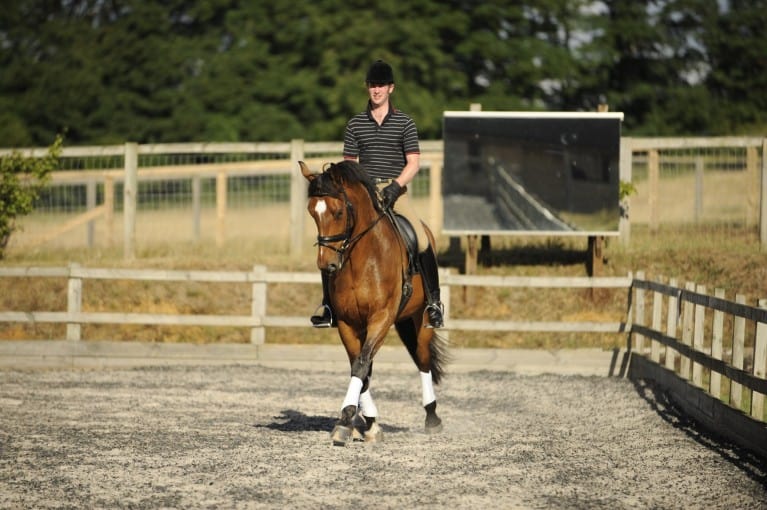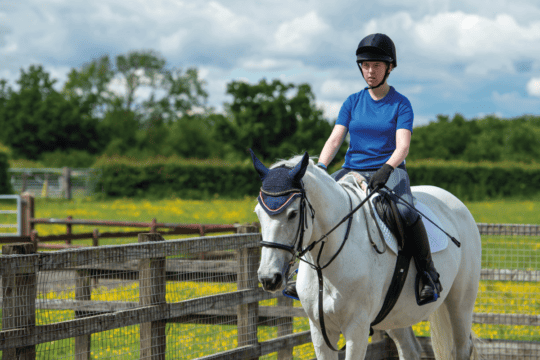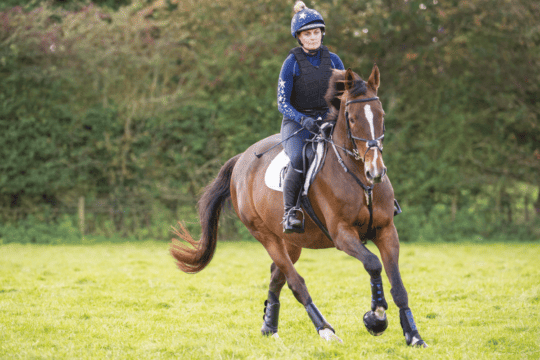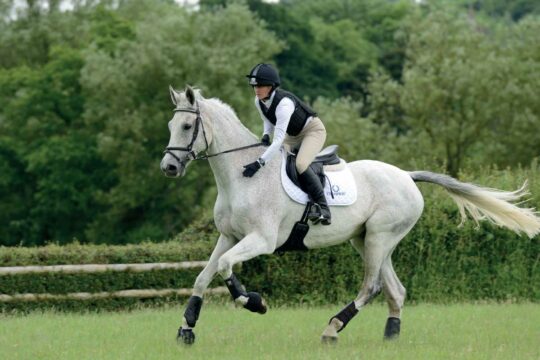Positive and negative feedback can be useful tools when training horses, says Perry Wood. However, good timing is crucial for sending clear messages

Reward and, particularly, punishment are sensitive subjects where people and horses are concerned.
It is probably true to say that we all like to reward our horses and probably don’t like punishing them, but I guess we have all found ourselves doing both of those things on occasions. The question is, when it comes to horses, are things as straightforward as what we refer to as ‘reward and punishment?’
Many horses have experienced a life of misery as a result of being punished during the last few thousand years, and many horses have been rewarded in ways that they just don’t understand. Despite all this, horses are amazing creatures and, provided they understand what is asked of them and are physically capable of doing it, they are generally willing to do what we ask and are willing to please.
Pasture praise
Take a look at a herd of horses and see how they reward each other. Perhaps the main way that horses do this is by being allowed to stand physically close to one another and being left in peace.
So, when we want to reward our horse, it follows that the reward needs to be in a way that he understands. Reward needs to happen in the present moment, ideally whilst the horse is actually doing what we want – not afterwards.
Relax!
Let your horse know he’s doing well by allowing him to be at peace near to you. This is how horses let each other know they are doing OK.
Natural instincts
It seems to me that horses don’t really communicate by rewarding and punishing each other in the way we think of it. This is probably because horses and people are fundamentally different. We are predators, animals who hunt for prey – horses are prey animals, who are instinctively programmed to avoid being eaten by predators.
If we want to really get along with our horses and create lasting success, perhaps we need to begin by looking at how they naturally deal with these things in the herd.
So, how do horses reward each other? Unlike humans, horses don’t give each other material rewards such as food (Polo mints or carrots), gifts, money (or a rosette!) – nor do they pat each other. That doesn’t mean they don’t communicate positively to one another about doing something ‘right’, but the way in which they reward each other is different to the way we do.
We humans have a concept of past, present and future, so it is easier for us to understand that when someone gives us a reward, it is for something we did for them or did well – even if it was just a minute ago. And because unlike horses, humans have spoken language, if someone gives us something as a reward, they can tell us what it’s for, helping us to understand the association between our actions and our reward.
High emotions
Horses are incredibly powerful, big and fast, and they are also very sensitive to our emotions. There may be rare occasions, perhaps when it is a matter of danger, where firm action is required with a horse. But if we can take that action without becoming emotional, the horse’s response is quite different to if the action is accompanied by real anger
or frustration.
When we take action that is mixed with anger, fear or frustration, the horse reacts as though punished, and will either withdraw or attack.
Most horses are very forgiving and seem to live with our frustration and anger, but I first noticed the importance of remaining emotionally detached with my first stallion.
I had a good relationship with him, but there were times when anything but firmness would have gone totally unnoticed. Although I generally kept myself calm inside, on one memorable occasion, with him prancing and pulling me about on the lead rope, I got genuinely angry inside when I corrected him with the rope as I would normally. However, because there was real anger behind my reaction, he instantly turned to face me as an adversary, ready to do a battle I could not win. This was a big lesson for me.
Ride in harmony
If you’re pretty small compared to your horse, try not to enter a battle of strength! Instead, keep your signals subtle.
Punishment?
By and large, horses don’t punish each other and therefore do not really understand the concept of punishment.
As with reward, because horses don’t have the same concept of time as we do, it’s often hard for them to connect what they are being punished for with whatever it was they did wrong – that was in the past. Although horses have incredible memories, they don’t relate why they are being punished with something they did previously.
Consequently, they often just think they are being hit or shouted at, but haven’t a clue why. This really doesn’t help to build your horse’s trust or a good working relationship. It can actually make the horse less able to try for you, as he may become afraid of getting things wrong and being punished.
The fact that horses don’t think in terms of punishment doesn’t mean they don’t keep each other in line! But rather than punishment (something that hurts you when you have done something wrong), horses are very good at setting boundaries with one-another and having a set of consequences if those boundaries are overstepped.
A boundary is a consistent line drawn about what is acceptable and what is not. For example, an electric fence doesn’t ‘punish’ a horse, but horses don’t touch it because they know it will give them a shock. The fence does not say, ‘you did something wrong so now I’m going to hurt you’. It just says, ‘I’m here and this is a boundary’. There is nothing personal in it whatsoever.
Follow the leader
I’ve had a successful herd leader called Monte for 15 years now and he is an absolute professional at setting boundaries. He has been the leader of all my horses and, as well as this, he’s been very popular with them – that makes Monte a good example to copy.
So, how does Monte ‘do’ boundaries? First, when the followers are being polite around him, he is totally passive and appears to do nothing to assert his leadership. He also spends a lot of time mutually grooming and showing affection within the herd.
If any horse steps across a boundary – perhaps by being too pushy with their body language within Monte’s space – he will follow a predictable pattern of what might be called ‘negative reinforcement’, which goes like this…
- Twitch an ear, and tighten the muzzle and eye.
- If that doesn’t work, swish the tail.
- If that doesn’t work, shake the head.
- As a final warning, move the hindquarters into ‘firing position’.
- If any horse has ignored all of the preceding steps, ‘open fire’!
This whole procedure happens only when necessary and all without emotion or resentment. Once it is over, it’s like it never happened and everyone is friends again, quietly grazing together.
Riding for a fall?
Boundaries are a better way of approaching issues with horses than is punishment, but it’s better to set the horse up to ‘get it right’, then he doesn’t need to be punished at all.
A simple example of this might be a horse biting. Punishing a horse by hitting him doesn’t usually work – he often gets quicker and more cunning instead! The clever horseman doesn’t put himself in a position where the horse can bite – he has set things up so the horse can ‘get it right’.
You can help a horse to ‘get it right’ under saddle by making sure you don’t ride him in situations where he is over-faced, or likely to be overcome by fear or excitement.
Think like a horse
Anthropomorphising. A big word, but it basically means thinking about animals as though they are people. Punishment often occurs if we wrongly think of horses as people or if we believe horses think like we do. So think twice the next time you say, ‘he is trying it on’ or ‘he’s likes to get one over on me’.
It is easy to see that horses don’t think like humans – they think like horses! Of course they compete for leadership and test boundaries, but they don’t scheme to ‘play us up’.
Once we understand this, it’s easier to handle horses without having to ‘punish’ them. This doesn’t mean we don’t set and maintain healthy boundaries, but as we become better at thinking like horses, we become more adept at setting up situations where we are both winners.
Great groundwork
How do you let your horse know he’s doing well when you’re handling him from the ground?
Here are some useful tips…
- Let him stand still next to you and enjoy being there – it lets him know he is on the right track.
- Stroke him in areas he likes. Horses don’t pat each other, but enjoy mutual grooming, especially around the withers and neck, so keep your touch rhythmic and slow.
- Allow the lead rope to have some slack in it when you lead him, to give him some peace when he is doing what you want. He will start to look for the slack in the rope, seeking his own reward.
- Adopt a relaxed body posture, but make sure you don’t look weak or a ‘pushover’. Horses enjoy pleasant company, and a relaxed posture can be rewarding.
Riding rewards
It’s equally important to let your horse know when he is doing well under saddle. Here’s how…
- Say ‘yes’ to yourself and your horse in every moment he does what you want. Say, or just think, ‘yes’ to yourself while the horse continues to work, and he will ‘feel’ it
- Let your horse stop and rest when he has done something well, to give him time to rest his mind, rather than it being filled up with all of our requests.
- Allow the horse moments of ‘peace’, even without stopping. It can be useful to reward your horse by letting your aids be silent when he responds well to you.
- Soften inside your hands or body when your horse is doing something well (above). Softening inside your body rewards him without you having to change your posture or rein contact, so is very effective.
- Always finish on a good note, then halt, dismount and put your horse away for the day.















